-
 Bitcoin
Bitcoin $111100
0.49% -
 Ethereum
Ethereum $4304
0.21% -
 XRP
XRP $2.888
2.36% -
 Tether USDt
Tether USDt $0.9999
-0.03% -
 BNB
BNB $879.1
1.62% -
 Solana
Solana $207.9
2.67% -
 USDC
USDC $0.9998
-0.01% -
 Dogecoin
Dogecoin $0.2320
7.05% -
 TRON
TRON $0.3306
0.59% -
 Cardano
Cardano $0.8407
1.68% -
 Hyperliquid
Hyperliquid $48.50
3.55% -
 Chainlink
Chainlink $22.52
0.46% -
 Ethena USDe
Ethena USDe $1.001
-0.02% -
 Sui
Sui $3.395
0.74% -
 Bitcoin Cash
Bitcoin Cash $602.5
0.82% -
 Stellar
Stellar $0.3645
1.67% -
 Avalanche
Avalanche $24.82
0.93% -
 Hedera
Hedera $0.2211
0.99% -
 UNUS SED LEO
UNUS SED LEO $9.606
0.00% -
 Cronos
Cronos $0.2583
-2.44% -
 Litecoin
Litecoin $113.7
0.82% -
 Toncoin
Toncoin $3.094
0.39% -
 Shiba Inu
Shiba Inu $0.00001254
1.50% -
 Polkadot
Polkadot $4.040
4.96% -
 Uniswap
Uniswap $9.429
0.08% -
 Dai
Dai $0.9999
-0.01% -
 Ethena
Ethena $0.7629
3.04% -
 World Liberty Financial
World Liberty Financial $0.2111
-13.16% -
 Monero
Monero $269.9
0.50% -
 Aave
Aave $300.9
-0.41%
What is a blockchain's "state"?
The blockchain's "state" reflects its current data snapshot—like account balances and smart contract info—updated via validated transactions and maintained across all nodes.
Sep 02, 2025 at 10:18 pm
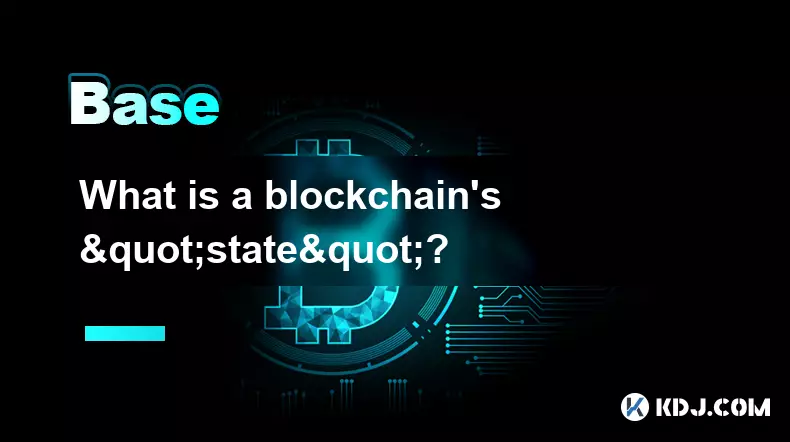
Understanding the concept of a blockchain's 'state' is essential for grasping how decentralized networks maintain consistency, execute transactions, and preserve data integrity across distributed nodes.
Definition and Core Components of Blockchain State
1. The 'state' of a blockchain refers to the current snapshot of all data stored on the network at a given point in time. This includes account balances, smart contract data, ownership records, and other persistent information.
2. In systems like Ethereum, the state is represented as a massive data structure known as the state trie, which cryptographically links every account and its current attributes.
3. Each account in the state contains details such as nonce, balance, storage root, and code hash, allowing the network to verify authenticity and prevent tampering.
4. The state is not stored in the blockchain’s blocks directly but is instead derived from the execution of all transactions up to the latest block.
5. Nodes maintain a local copy of the current state, which they update upon validating new blocks, ensuring network-wide consensus on the system's condition.
How State Transitions Occur
1. Every transaction executed on the blockchain triggers a state transition, modifying account balances or smart contract variables.
2. Miners or validators process transactions and apply them to the current state, producing a new state root that is included in the next block header.
3. These transitions are deterministic—given the same initial state and transaction sequence, all nodes will arrive at the same final state.
4. Consensus mechanisms like Proof of Stake or Proof of Work ensure that only valid state transitions are accepted by the network.
5. Invalid transactions, such as those attempting double spending, are rejected and do not alter the state, preserving the integrity of the ledger.
The Role of State in Smart Contracts and dApps
1. Smart contracts rely entirely on the blockchain’s state to read and write data, enabling functionalities like token transfers, voting, and lending.
2. When a user interacts with a decentralized application (dApp), their transaction modifies the state of the associated smart contract.
3. The state allows contracts to maintain memory between executions, such as tracking user deposits or game scores.
4. Developers must design contracts with state efficiency in mind, as every change consumes gas and impacts network performance.
5. State bloat—excessive growth in stored data—can lead to scalability challenges and higher operational costs for nodes.
Frequently Asked Questions
What is the difference between blockchain state and transaction history?The transaction history is the immutable record of all actions taken on the blockchain, stored within the blocks. The state, in contrast, is the result of applying all those transactions—a dynamic summary of current conditions, like account balances and contract data.
Can the blockchain state be altered retroactively?No. Once a block is confirmed and the state is updated, reversing changes would require rewriting the blockchain’s history, which is computationally infeasible due to cryptographic hashing and consensus rules.
How do light clients access the blockchain state?Light clients do not store the full state. Instead, they request state proofs from full nodes, verifying specific data (like an account balance) using Merkle proofs without downloading the entire dataset.
Why is state storage expensive in blockchain networks?Every node must store and process state data. Because storage is replicated across thousands of nodes, expanding the state increases the burden on the entire network, leading to higher gas fees and performance trade-offs.
Disclaimer:info@kdj.com
The information provided is not trading advice. kdj.com does not assume any responsibility for any investments made based on the information provided in this article. Cryptocurrencies are highly volatile and it is highly recommended that you invest with caution after thorough research!
If you believe that the content used on this website infringes your copyright, please contact us immediately (info@kdj.com) and we will delete it promptly.
- BlockchainFX, Bitcoin Hyper, and Little Pepe: Which Presale is the Real Deal?
- 2025-09-08 22:30:12
- Somnia Price Rally: Why This Cryptocurrency Is Surging
- 2025-09-08 22:30:12
- BlockchainFX: The Trading App with 1000x Potential?
- 2025-09-08 22:30:13
- BlockchainFX, Altcoins, and 2025 Growth: A NYC Perspective
- 2025-09-08 22:30:13
- Bitcoin, BlockchainFX Presale, and the Blockchain Revolution: What's Next?
- 2025-09-08 22:35:15
- Justin Sun, Crypto Regulation, and Investment Opportunities: A NYC Perspective
- 2025-09-08 22:35:15
Related knowledge
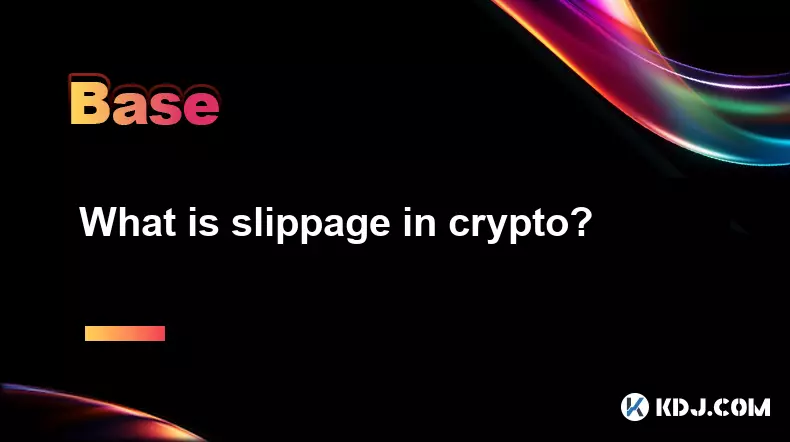
What is slippage in crypto?
Sep 08,2025 at 08:55pm
Understanding Slippage in Cryptocurrency Trading1. Slippage refers to the difference between the expected price of a trade and the actual price at whi...
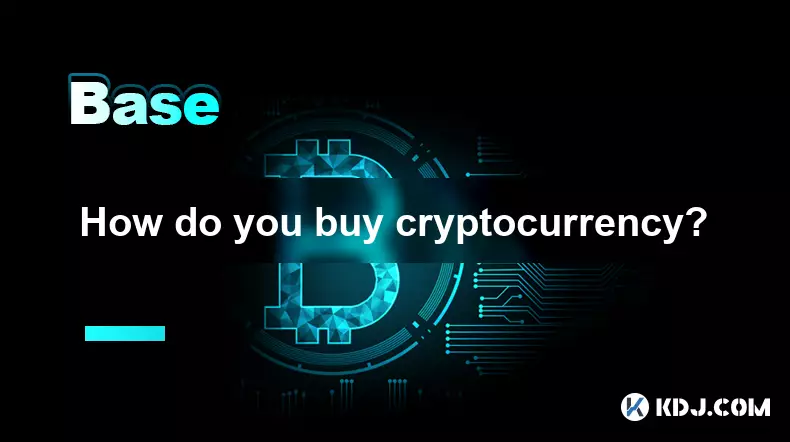
How do you buy cryptocurrency?
Sep 08,2025 at 07:54pm
Understanding the Basics of Cryptocurrency Purchases1. To buy cryptocurrency, you must first choose a reliable digital currency exchange. Platforms li...
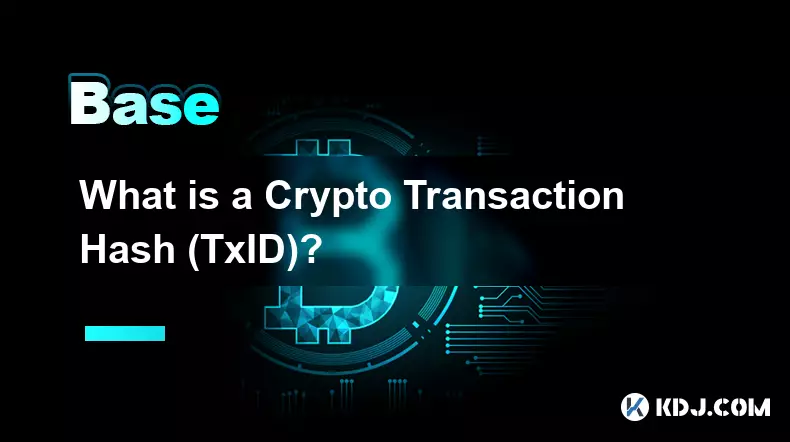
What is a Crypto Transaction Hash (TxID)?
Sep 07,2025 at 01:18pm
Understanding the Role of a Crypto Transaction Hash1. A crypto transaction hash, often referred to as TxID, is a unique identifier generated when a tr...

What is On-Chain and Off-Chain Data?
Sep 07,2025 at 04:55pm
Understanding On-Chain Data1. On-chain data refers to all information that is recorded directly on a blockchain. Every transaction, smart contract exe...
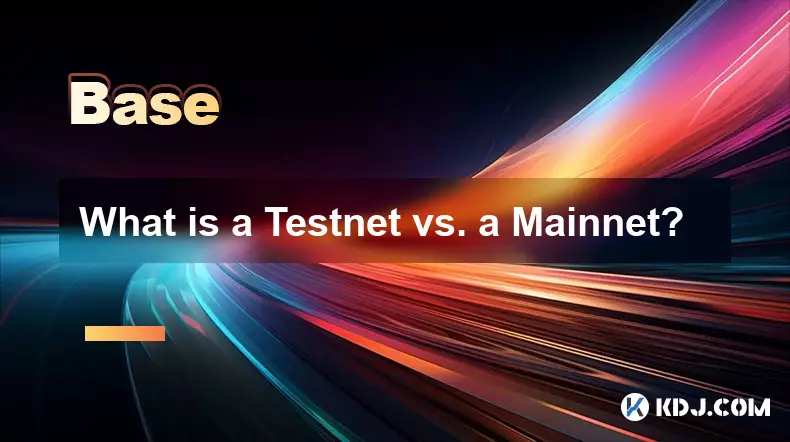
What is a Testnet vs. a Mainnet?
Sep 08,2025 at 05:55am
Understanding the Core Differences Between Testnet and Mainnet1. A Testnet is a parallel blockchain network used exclusively for testing purposes. Dev...

How to do Your Own Research (DYOR) in Crypto?
Sep 08,2025 at 08:00am
Understanding the Foundations of Crypto Projects1. Every cryptocurrency project starts with a foundational whitepaper. This document outlines the tech...

What is slippage in crypto?
Sep 08,2025 at 08:55pm
Understanding Slippage in Cryptocurrency Trading1. Slippage refers to the difference between the expected price of a trade and the actual price at whi...

How do you buy cryptocurrency?
Sep 08,2025 at 07:54pm
Understanding the Basics of Cryptocurrency Purchases1. To buy cryptocurrency, you must first choose a reliable digital currency exchange. Platforms li...

What is a Crypto Transaction Hash (TxID)?
Sep 07,2025 at 01:18pm
Understanding the Role of a Crypto Transaction Hash1. A crypto transaction hash, often referred to as TxID, is a unique identifier generated when a tr...

What is On-Chain and Off-Chain Data?
Sep 07,2025 at 04:55pm
Understanding On-Chain Data1. On-chain data refers to all information that is recorded directly on a blockchain. Every transaction, smart contract exe...

What is a Testnet vs. a Mainnet?
Sep 08,2025 at 05:55am
Understanding the Core Differences Between Testnet and Mainnet1. A Testnet is a parallel blockchain network used exclusively for testing purposes. Dev...

How to do Your Own Research (DYOR) in Crypto?
Sep 08,2025 at 08:00am
Understanding the Foundations of Crypto Projects1. Every cryptocurrency project starts with a foundational whitepaper. This document outlines the tech...
See all articles

























![[Pycoin] PI Coin -US President (Trump) Declaration ?? !! 'US' runs first. / Paikoin mining speed acceleration [Pycoin] PI Coin -US President (Trump) Declaration ?? !! 'US' runs first. / Paikoin mining speed acceleration](/uploads/2025/09/08/cryptocurrencies-news/videos/pycoin-pi-coin-president-trump-declaration-runs-paikoin-mining-speed-acceleration/68bed38c01e7a_image_500_375.webp)































































